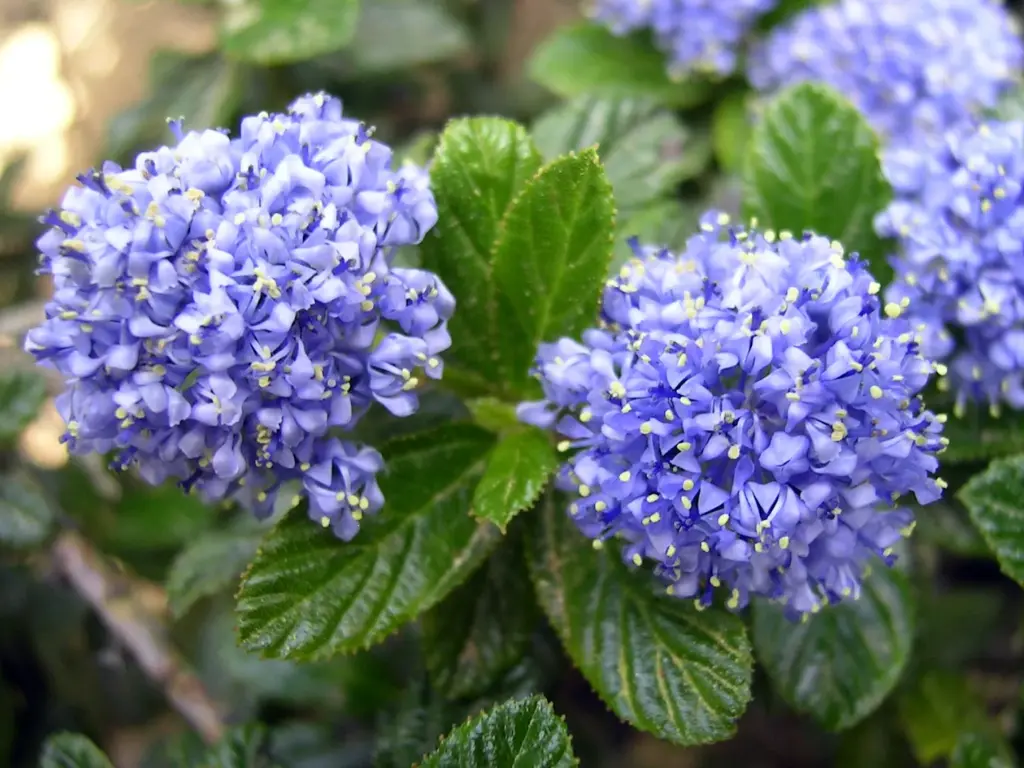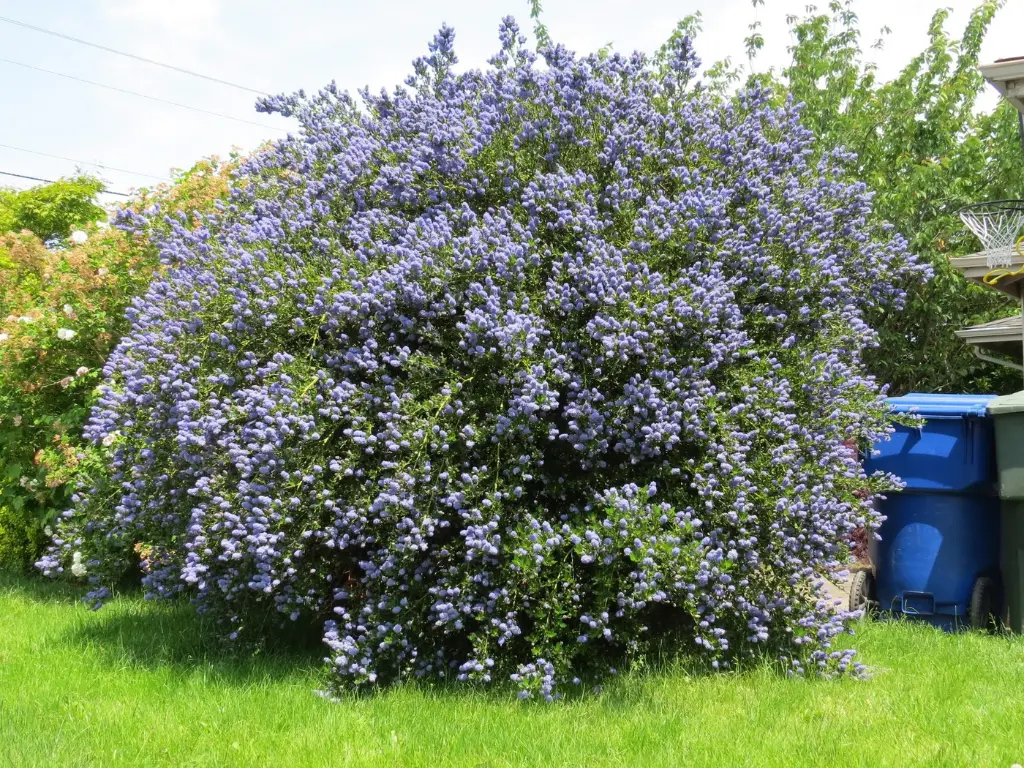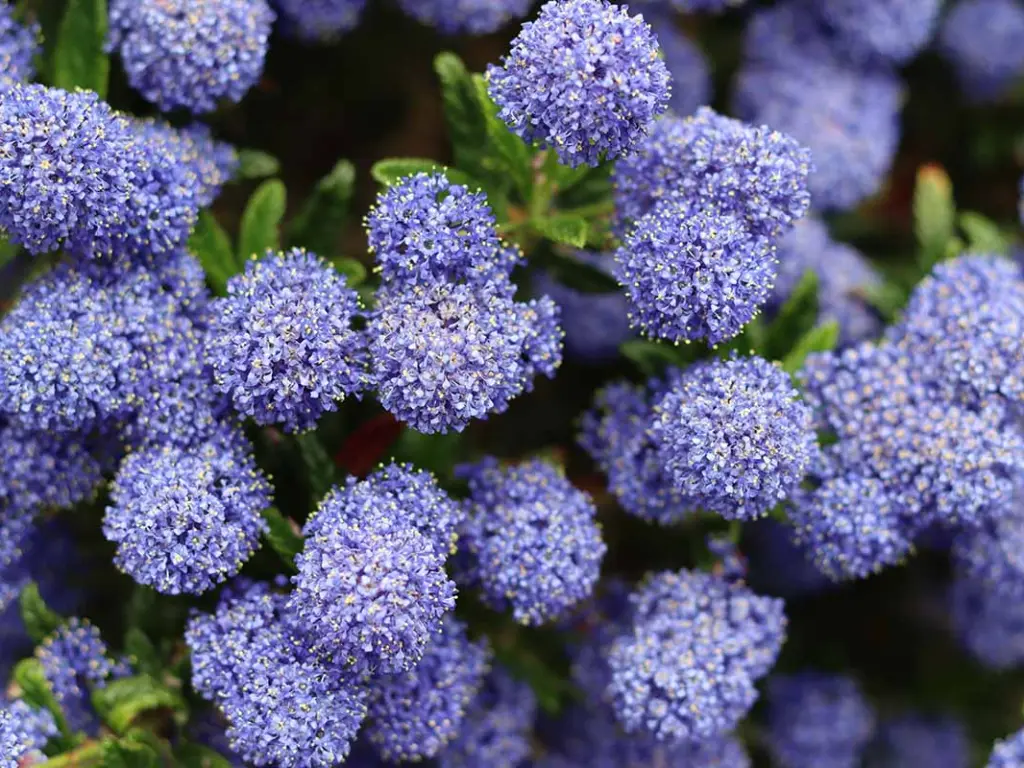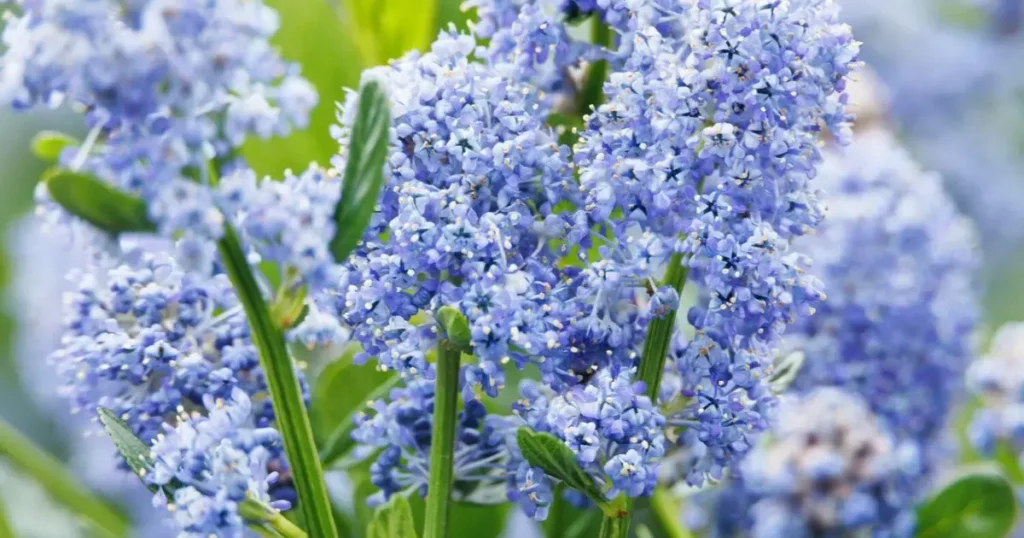Guides
How to Grow California Lilacs: The Ultimate Shade Garden Guide
Do you have a shady spot in your garden and are unsure what plants will thrive there? Are you dreaming of adding some color and beauty to those darker areas of your yard? If so, California lilacs (scientifically known as Ceanothus) could be the perfect solution! These stunning, drought-tolerant shrubs are ideal for shaded gardens, offering vibrant blue flowers and a lovely fragrance.
In this guide, I’ll walk you through everything you need to know about growing California lilacs in your shade garden, from planting tips to care advice. Whether you’re a seasoned gardener or a beginner, you’ll find practical tips to ensure your California lilacs flourish in shady conditions.
What Makes California Lilacs Perfect for Shade Gardens?

California lilacs are native to the western United States, particularly California, where they thrive in various climates. While many lilacs prefer full sun, certain varieties of Ceanothus are well-suited to partial or even full shade. Their adaptability to different environments, combined with their low-maintenance needs, makes them a perfect choice for a shady garden.
These lilacs are not only beautiful but also incredibly hardy, surviving in both dry and shady conditions. Plus, their vibrant blue flowers attract pollinators like bees and butterflies, helping to create a lively, thriving garden ecosystem.
Understanding Shade and Its Effect on Growth

Before diving into planting, it’s important to understand what “shade” means for your garden. Shade can be categorized into several types, from full shade (where the area gets little to no direct sunlight) to partial shade (where the area gets filtered sunlight or a few hours of direct sun).
California lilacs generally thrive in partial shade, meaning they can tolerate some direct sunlight but may not do well in areas with harsh afternoon sun. Too much shade, however, can result in poor blooming and weak growth.
So, if you’re planning to plant your California lilacs in a shaded spot, aim for a location that receives at least a few hours of morning sunlight, which is ideal for these plants.
How to Grow California Lilacs
Growing California lilacs in a shaded garden is possible, but to get the best results, you’ll need to follow these essential steps:
Choose the Right Variety
Not all varieties of Ceanothus are created equal when it comes to shade tolerance. The best varieties for shaded areas include:
-
Ceanothus ‘Ray Hartman’: Known for its ability to tolerate shade and its beautiful dark blue flowers.
-
Ceanothus ‘Concha’: Another shade-loving variety with rich blue blooms.
When selecting a variety, make sure to check whether it’s suited to your specific climate zone and shade conditions.
Ideal Planting Conditions
This lilac prefers well-drained, slightly acidic soil. To prepare the soil for planting, consider the following:
-
Soil: Ensure the soil is rich in organic matter and well-drained. If your soil is heavy or clay-like, mix in some sand or organic compost to improve drainage.
-
Water: While California lilacs are drought-tolerant once established, they need consistent watering during their first growing season. Be careful not to overwater, as this can lead to root rot.
-
Temperature: These plants do well in regions with mild, Mediterranean climates, but they can adapt to various conditions as long as they are planted in the right spot.
When to Plant
The best time to plant California lilacs is in the spring or fall, when temperatures are cooler, and the soil is moist. Planting during these times gives the roots ample time to establish themselves before the heat of summer or the chill of winter sets in.
Step-by-Step Planting Guide
-
Dig the Hole: Make sure the planting hole is twice the size of the root ball to allow the roots to spread easily.
-
Place the Plant: Gently remove the plant from its pot and place it in the hole. Ensure the top of the root ball is level with the surrounding soil.
-
Backfill with Soil: Fill the hole with the soil you’ve prepared, and press down gently to eliminate any air pockets.
-
Water Thoroughly: After planting, water the area generously to settle the soil around the roots.
Caring for California Lilacs in Shade

Once your lilac plants are planted, they’re relatively easy to care for. Here are some tips to ensure they thrive in your shady garden:
Watering and Fertilizing
-
Watering: During the first year after planting, water the lilacs regularly to establish strong root systems. After they’re established, you can reduce watering, as they are drought-tolerant.
-
Fertilizing: These plants don’t require much fertilizer. In fact, too much fertilizer can damage them. If needed, use a low-nitrogen fertilizer in early spring to give them a boost.
Pruning

Pruning California lilacs is crucial for maintaining their health and shape. Here’s how to prune them properly:
-
When to Prune: Prune after the blooming period to avoid cutting off future flowers. Aim to prune in late spring or early summer.
-
What to Cut: Remove any dead or damaged branches, and trim back the overall shape if necessary. Be cautious not to cut too much, as California lilacs bloom on old wood.
Overwintering California Lilacs
California lilacs are cold-hardy down to USDA hardiness zone 4, depending on the specific cultivar. However, they still require protection from harsh, icy winds that can damage their buds. If you’re facing a late-season frost, it’s a good idea to cover the buds with a plant blanket to shield them from the cold and ensure they stay healthy throughout the winter.
How to Get California Lilacs to Bloom More Vigorously
California lilacs are renowned for their vibrant, showy blooms, which are a major attraction for both gardeners and pollinators like bees. The tiny, fragrant flowers bloom in large clusters, creating a breathtaking display of color in your garden. These shrubs can stay in bloom for around six weeks, and depending on the cultivar, some varieties offer an even longer blooming period.
California lilacs bloom at different times, depending on the species and cultivar. Generally, they flower from late spring to early summer, while some varieties continue blooming through the summer and into the fall. If you choose multiple cultivars with different bloom times, you can enjoy California lilacs in your garden for several months.
What Do California Lilac Flowers Look Like?

The most common color for California lilacs is a stunning shade of blue, although there are also some varieties that produce white or pink flowers. For instance, Ceanothus x pallidus (Perle Rose) is a deciduous cultivar that boasts bright pink blooms. Additionally, certain cultivars, like Ceanothus (Joyce Coulter), are appreciated not only for their vibrant flowers but also for their delightful fragrance.
How to Encourage More Blooms
Detailed view of the California lilac flowers, highlighting their stunning blue hue and delicate petals.
Although deadheading (removing spent flowers) isn’t always practical due to the sheer number of blooms on Ceanothus, you can still remove the spent flowers to maintain a neat appearance and encourage the plant’s vigor. Here are some tips to promote better blooming:
-
Ensure Adequate Sunlight: California lilacs thrive in partial sun to full sun. Too much shade can hinder blooming and lead to fewer flowers.
-
Avoid Overwatering: While these plants are drought-tolerant, overwatering can weaken the plant and reduce its flowering potential. Make sure the soil is well-drained and water sparingly.
-
Maintain Good Soil Conditions: California lilacs prefer slightly acidic, well-drained soil. Make sure your soil has good structure and isn’t too compact, which can limit root growth and, in turn, affect blooming.
Common Problems and Solutions
Even though California lilacs are low-maintenance, they can still face some challenges, such as:
-
Pests: Aphids and spider mites can sometimes infest lilacs. Use an insecticidal soap or introduce natural predators like ladybugs to control these pests.
-
Diseases: Powdery mildew can occasionally affect these plants. Ensure proper air circulation and avoid overhead watering to minimize the risk.
Frequently Asked Questions (FAQs)
-
Can California Lilacs Survive in Full Shade?
While they can tolerate partial shade, California lilacs typically need some direct sunlight to bloom well. Too much shade may result in poor flowering. -
How Much Sunlight Do California Lilacs Need to Thrive?
California lilacs do best in partial shade, where they can receive a few hours of morning sunlight. Full sun can sometimes be too harsh for them, especially in warmer climates. -
Are California Lilacs Deer-Resistant?
Yes! California lilacs are known for being deer-resistant, which makes them a great choice for gardens in areas with a lot of wildlife. -
What Is the Best Time to Plant California Lilacs?
The best time to plant California lilacs is either in the spring or fall when temperatures are cooler, and the soil remains moist.
Final Thoughts
California lilacs are a beautiful and low-maintenance choice for shaded gardens. With their stunning blue flowers, drought tolerance, and ability to thrive in shady conditions, they are the perfect addition to any garden in need of a little color. By following the planting and care tips outlined above, you can ensure that your California lilacs grow healthy and strong, providing years of beauty and enjoyment.
If you’re ready to transform your shady garden with these gorgeous plants, start by choosing the right variety, preparing the soil, and following the simple care guidelines. Happy gardening!
You may like:


Swedish Ivy Care: How to Grow a Healthy, Thriving Plant
Have you ever looked at your Swedish Ivy and wondered why the leaves are turning [...]
Nov
Avoid These 10 Garlic Planting Mistakes for Bigger, Healthier Bulbs
Growing garlic at home is one of the most satisfying things a gardener can do [...]
Nov
How to Prevent Christmas Cactus Bud Drop: Tips for a Healthy Bloom
Have you ever noticed your beautiful Christmas cactus (Schlumbergera) starting to lose its buds just [...]
Nov
Discover 7 Stunning Types of Night-Blooming Cereus
Have you ever waited for a flower that only opens at night and then disappears [...]
Nov
How to Propagate Comfrey from Root Cuttings: Easy Guide for Beginners
If you’re looking to grow your own healthy comfrey plants without spending too much, propagating [...]
Nov
10 Best Christmas Plants to Gift This Holiday Season
The holiday season is finally upon us, and if you’re searching for the perfect gift [...]
Oct